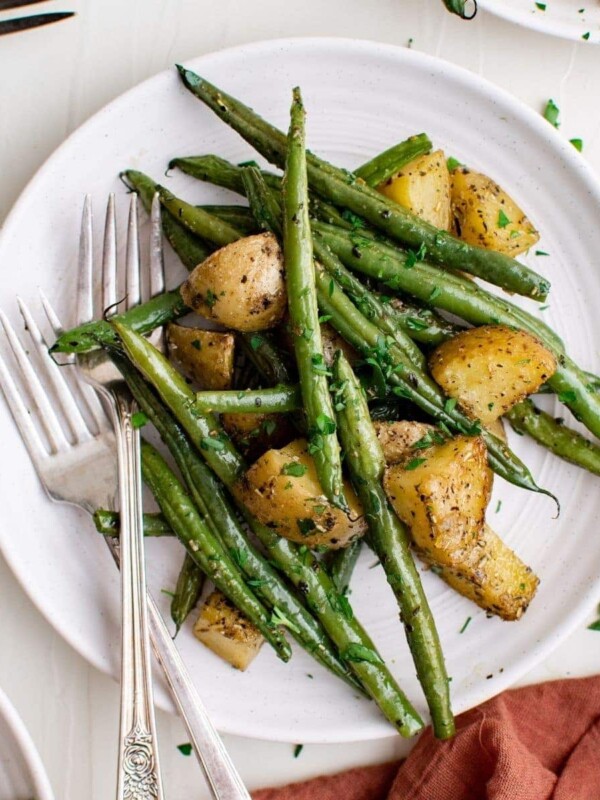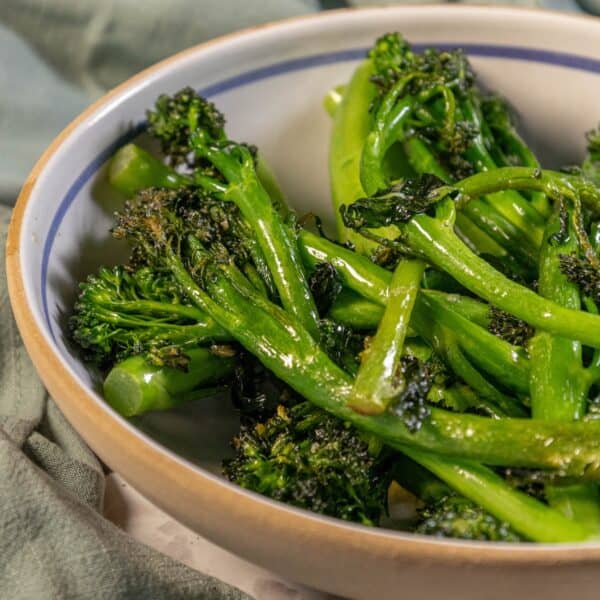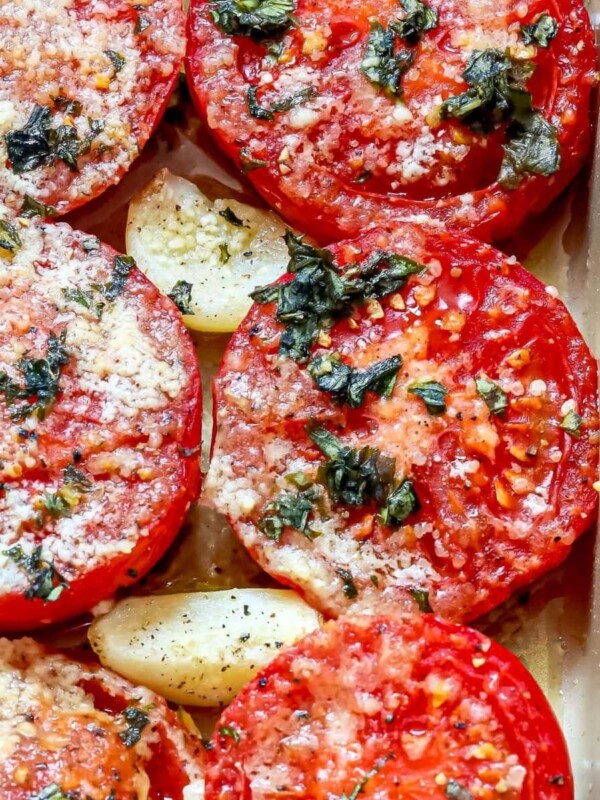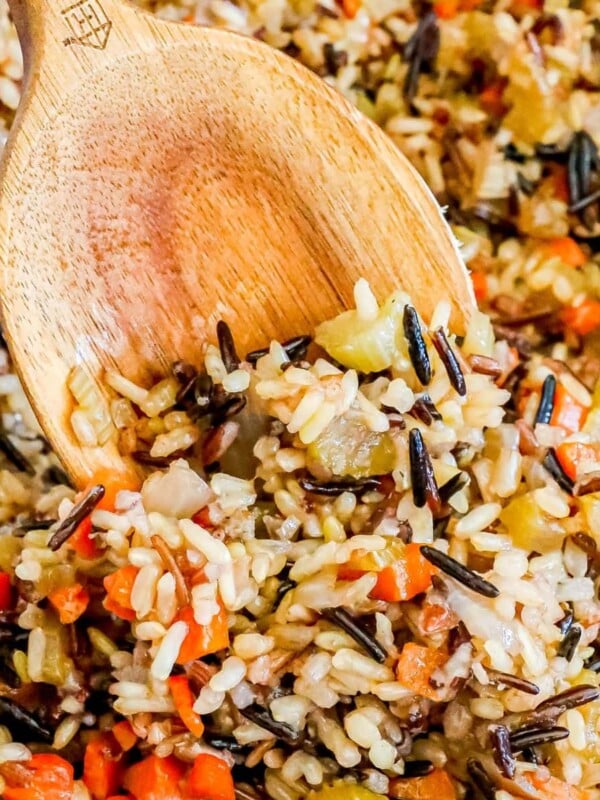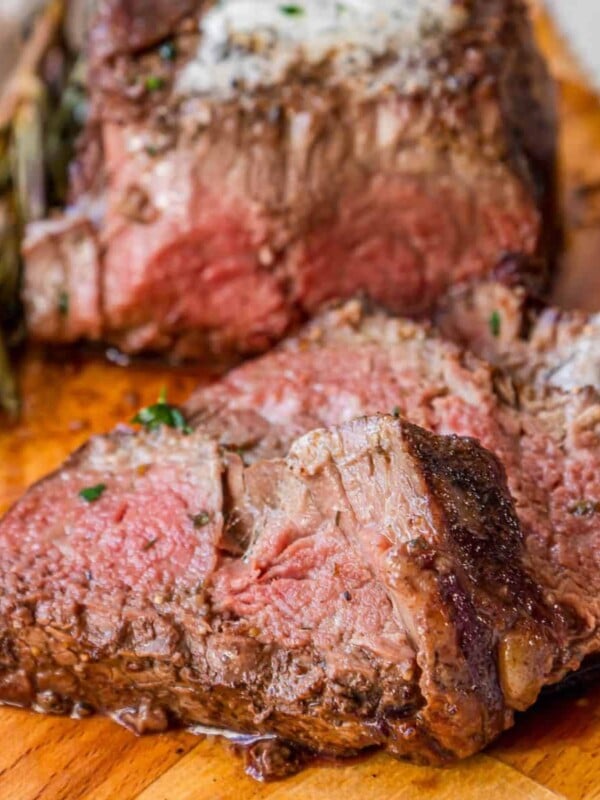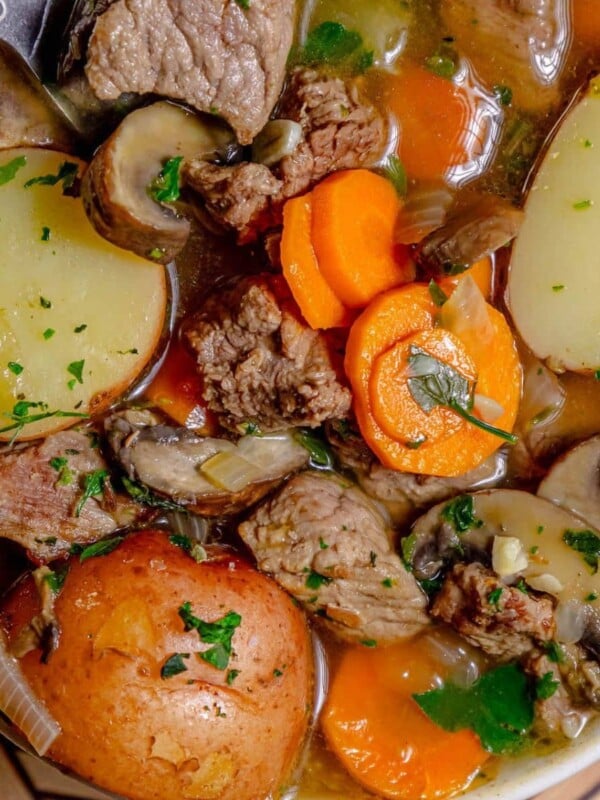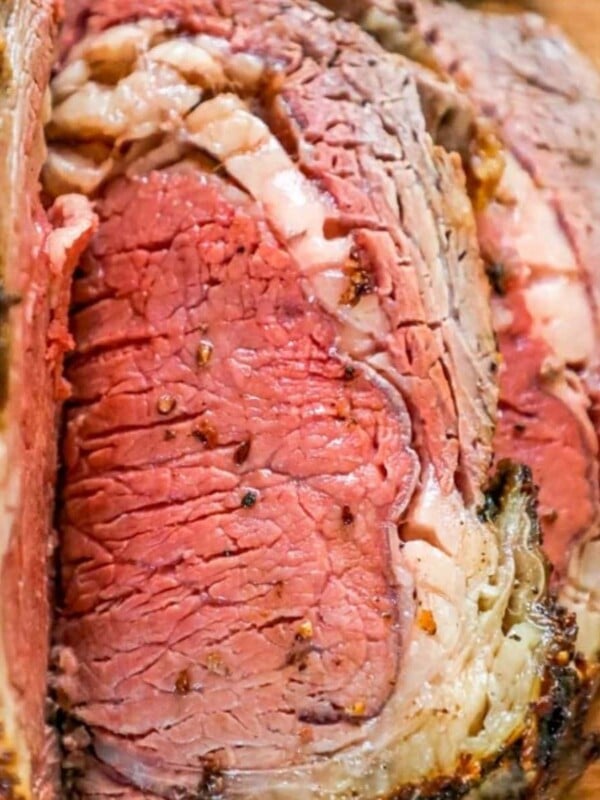This post contains affiliate links. Please read our disclosure policy.
Delicious, juicy, tender seared tri-tip steak that is simple to prepare, easy to serve, and a huge hit with the family, every time!
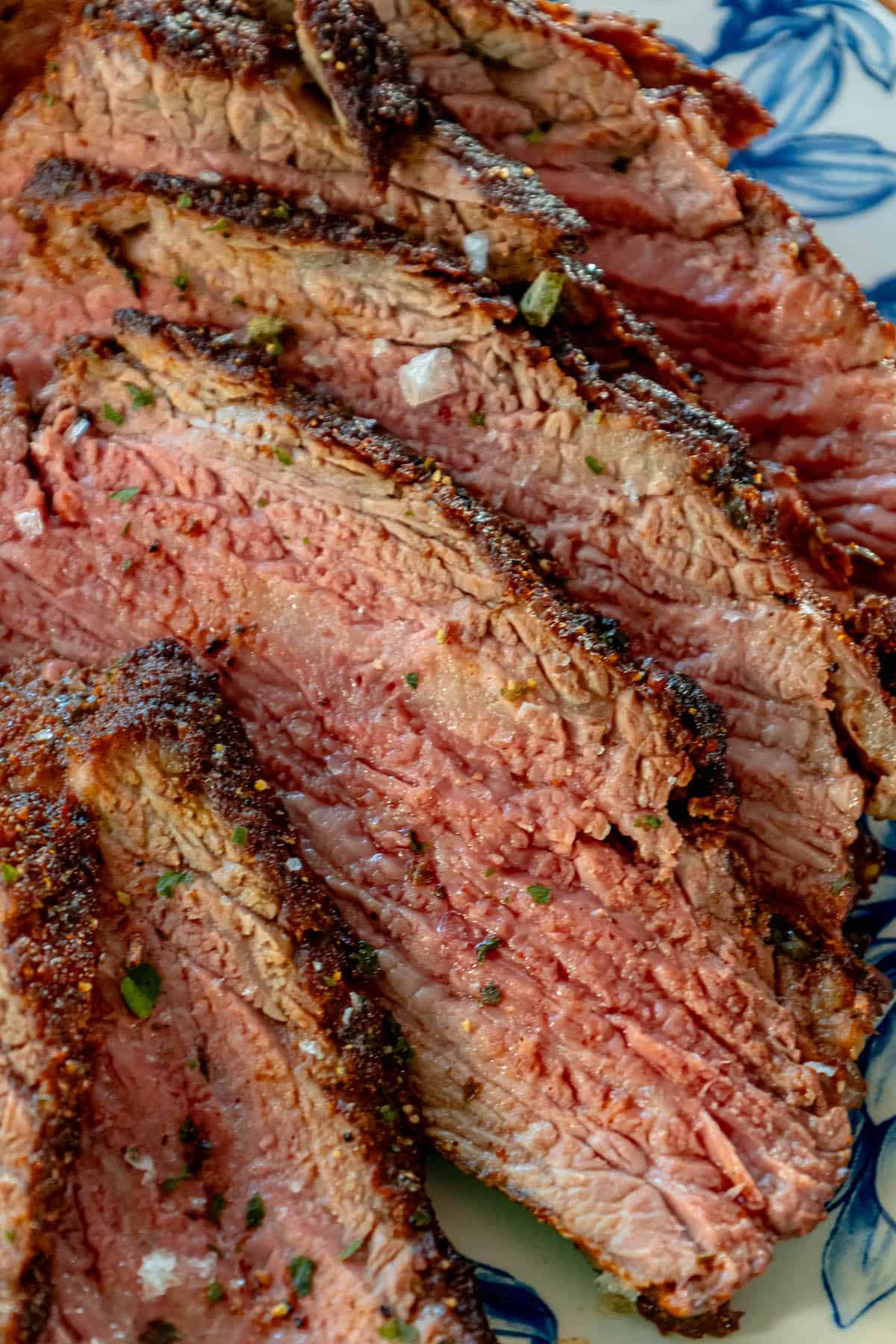
Don’t want all the extras in a recipe post? We provide a skip to recipe button in the top left corner, as well as a clickable table of contents, just below, to help make this page easier to navigate.
Table of contents
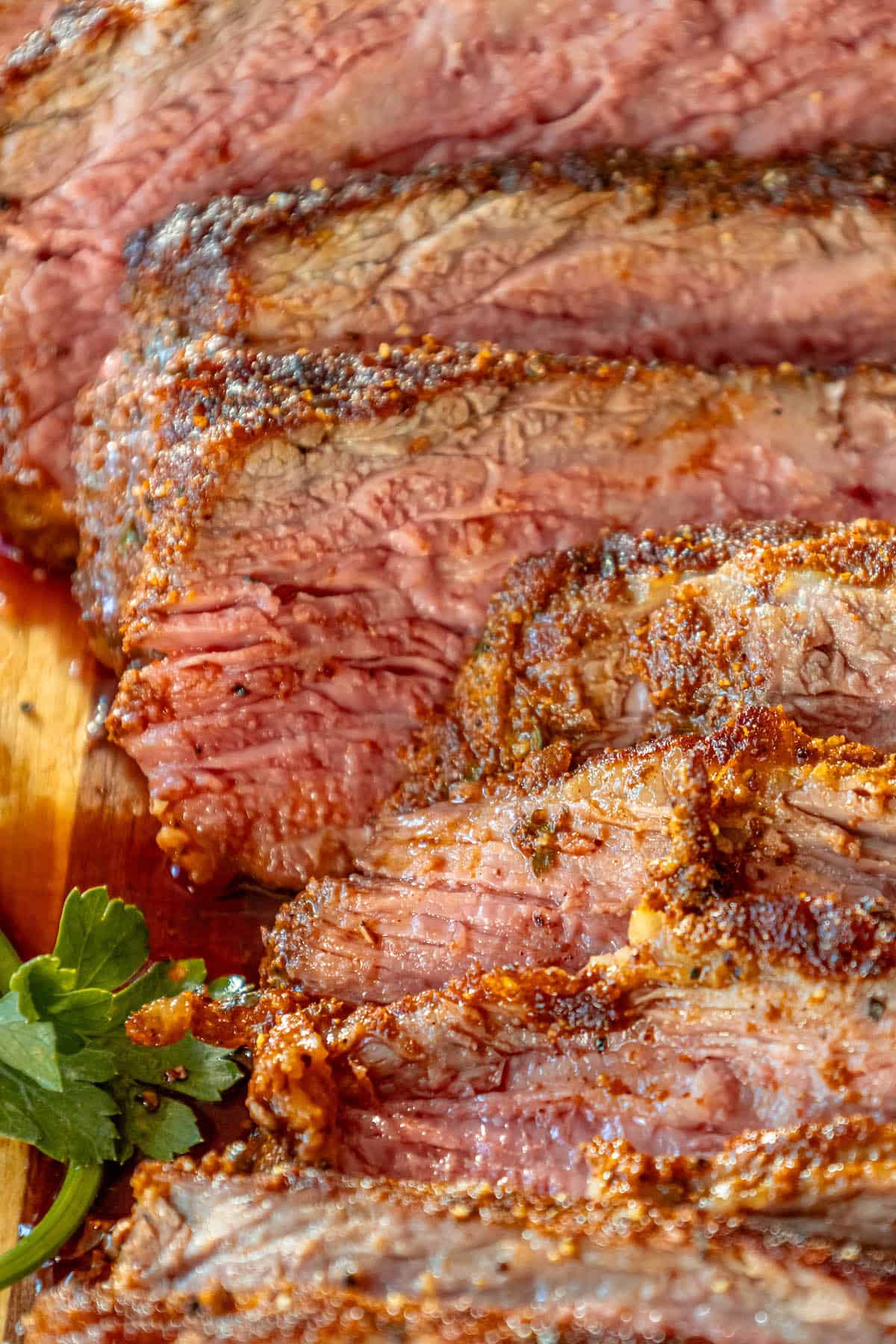
Low-High Tri tip method
Reverse searing is a fantastic method for cooking tri-tip, a cut of steak that’s gaining popularity for its rich flavor and versatility. This technique, which involves cooking low – then high – slow-roasting the meat first and then finishing it off with a high-heat sear – to bring out the very best in this particular cut of steak!
First off, why reverse sear? Traditional searing involves cooking the steak at a high temperature from the get-go, which can often lead to uneven cooking. Reverse searing, on the other hand, gently brings the steak up to temperature in a low oven or grill, ensuring a more evenly cooked interior.
This method is particularly beneficial for tri-tip, a relatively thick and unevenly shaped cut. By slowly cooking it at a low temperature, you allow the heat to penetrate to the thicker parts of the meat without overcooking the thinner areas. It can also cut down on smoke, gamy flavor, and
Once the tri-tip reaches a few degrees below your desired internal temperature, it’s then seared at a high temperature. This final step creates the Maillard reaction, the chemical process that gives seared food its distinctive rich flavor and appealing crust. The beauty of reverse searing is that it gives you more control over this process. Since the steak is already cooked to near-perfection, you only need to sear it briefly on each side to achieve that perfect crust, without the risk of overcooking the inside.
Another advantage of this method is its forgiveness. It’s a lot easier to hit the perfect medium-rare or medium doneness because the steak cooks so gradually. There’s less of a “now or never” moment of pulling the steak off the heat at the exact right second.
Lastly, reverse-seared tri-tip is juicier. Slow cooking allows the fat to render more slowly, which permeates the meat and enhances its flavor and juiciness. Also, since the meat is already rested during the slow-cook phase, it’s ready to eat almost immediately after searing.
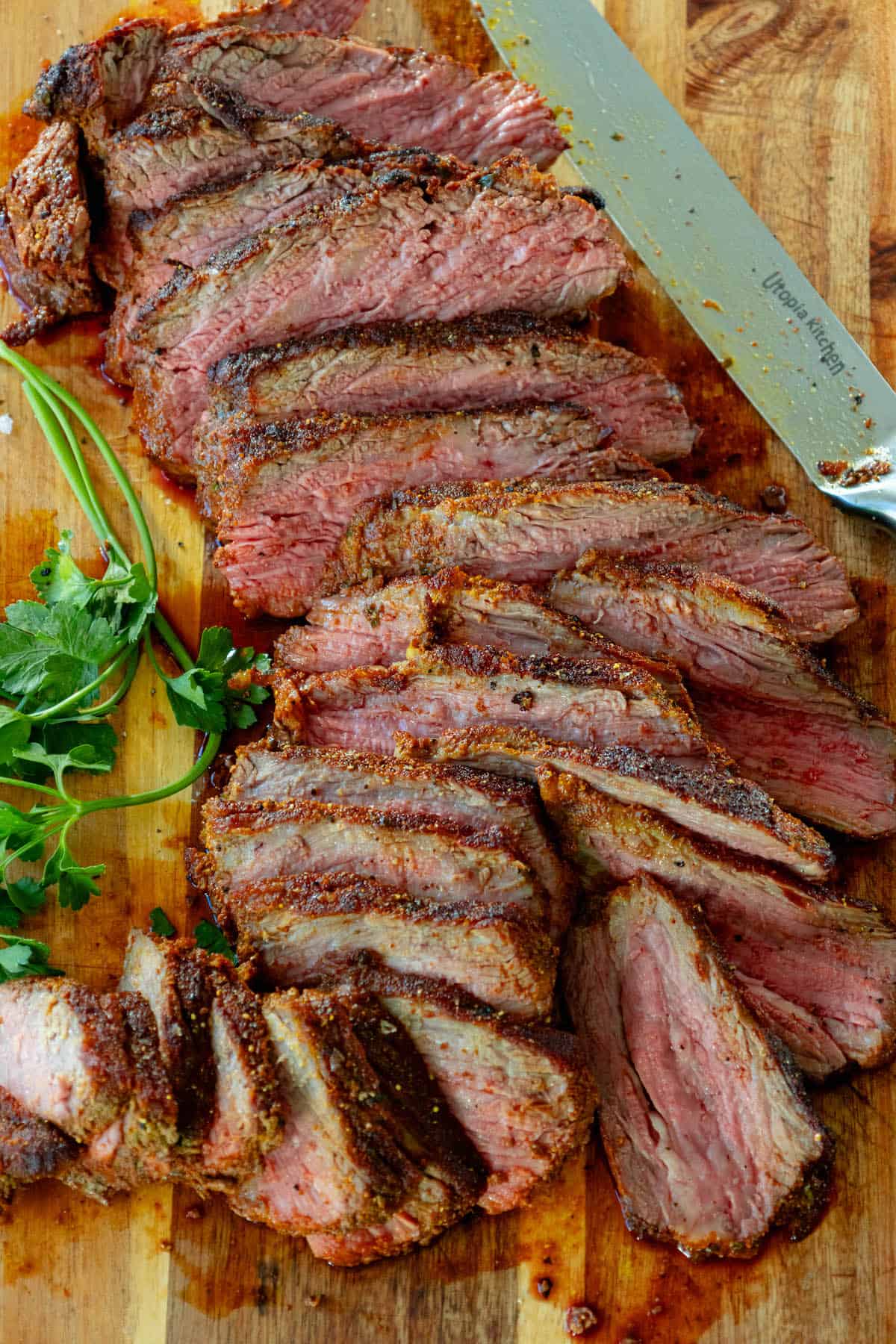
How to Reverse Sear TRI-TIP Steak
To make this recipe, we will need the following ingredients:
- Tri Tip: This is the main ingredient. Tri tip is a triangular cut of beef from the bottom sirloin that’s known for its rich flavor and tender texture. It’s the perfect cut for reverse searing due to its thickness and marbling.
- Steak Rub: The rub you choose will greatly influence the flavor profile of the tri tip. Most steak rubs contain a blend of salt, pepper, and other spices like garlic powder, onion powder, and sometimes a bit of sugar or paprika. The rub creates a delicious crust on the outside of the steak, enhancing the natural flavors of the meat.
- Butter: Adding butter towards the end of the cooking process introduces an extra layer of flavor. It helps to create a golden, caramelized crust during the searing stage and adds a rich, luxurious finish to the steak. Butter can also be infused with herbs like rosemary or thyme for an additional flavor dimension.




Once you’ve gathered your ingredients, we will use the following method:
- Prep. Preheat oven to 200. Cover steak with rub, being sure to thoroughly season all over.
- Low. Add to baking sheet and roast until tri-tip has reached 105 degrees internal temperature.
- High. Melt butter in a heavy cast iron pan and add steaks, searing on high, flipping often just to char each side.
- Rest and Enjoy! Let steak rest for at least 10 minutes before slicing. Cut against the grain when serving for tender meat.
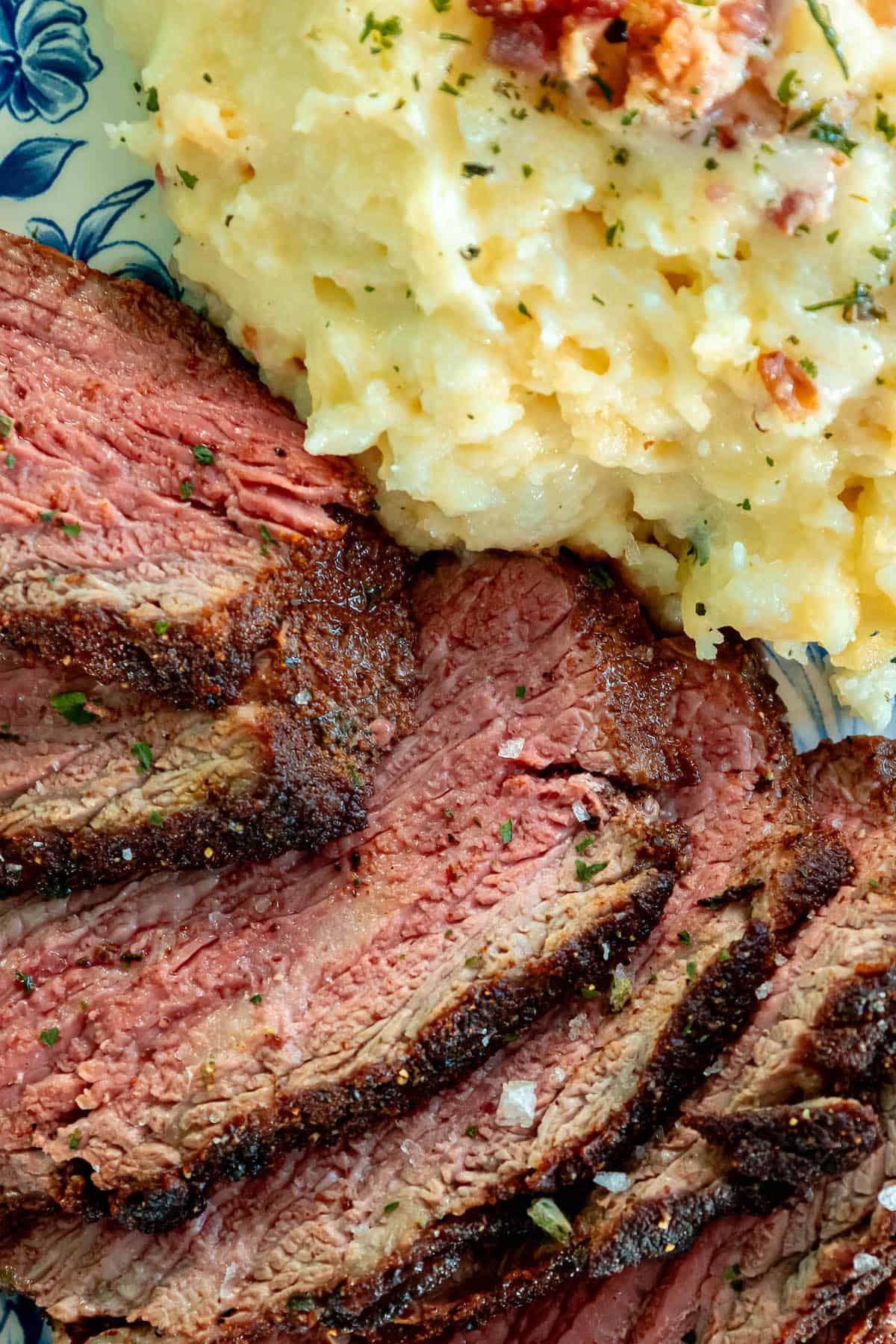
Tips and Tricks for Perfect Reverse Sear Tri Tip
Remove at the right temperature. Reverse searing tri-tip involves slow-roasting it at a low temperature in the oven and then finishing with a high-heat sear. The key to perfect doneness is knowing when to remove the steak from the oven before searing. Here are the internal temperatures you should aim for, taking into account that the temperature will rise a few degrees during searing:
- Rare: Remove from the oven when the internal temperature reaches about 115-120°F (46-49°C). After searing, it should be around 120-125°F (49-52°C).
- Medium Rare: Remove at 120-125°F (49-52°C). After searing, it should reach 130-135°F (54-57°C).
- Medium: Take it out at about 130-135°F (54-57°C). Post-searing, it should be around 140-145°F (60-63°C).
- Medium Well: Remove when it’s around 140-145°F (60-63°C). The final temperature after searing should be about 150-155°F (65-68°C).
- Well Done: Take the tri-tip out of the oven at 150-155°F (65-68°C). It should reach an internal temperature of 160°F (71°C) or higher after searing.
Select a Quality Tri-Tip: Start with a good-quality tri-tip. Look for one that is well-marbled, as this will ensure a flavorful and juicy result.
Season Generously: Season the tri-tip generously with salt and pepper. You can also use a dry rub or marinade for added flavor. Allow the meat to sit at room temperature for about 30 minutes to let the seasonings penetrate.
Use an Accurate Meat Thermometer: Invest in a reliable meat thermometer to monitor the internal temperature. This is crucial for achieving your desired level of doneness. For medium-rare, aim for an internal temperature of 130-135°F (54-57°C).
Low and Slow Cooking: Preheat your oven or grill to a low temperature, typically around 225-250°F (107-121°C). This low and slow cooking allows for even heating and gradual cooking of the tri-tip.
Indirect Heat: If using a grill, set it up for indirect cooking by having one side with low heat and the other with high heat. Place the tri-tip on the low-heat side to start.
Reverse Sear: Slow-cook the tri-tip until it reaches about 10-15°F (5-8°C) below your target internal temperature. This can take around 45 minutes to 1.5 hours, depending on size and temperature. Check the internal temperature with your thermometer.
Searing Phase: Once the tri-tip is close to your target temperature, move it to the high-heat side of the grill or transfer it to a hot cast-iron skillet. Sear each side for 1-2 minutes to develop a flavorful crust.
Resting Time: After searing, remove the tri-tip from the heat and let it rest for 10-15 minutes. This allows the juices to redistribute within the meat.
Slicing Against the Grain: When slicing, cut the tri-tip against the grain. This helps ensure tenderness.
Serve with Flavorful Sides: Accompany your reverse-seared tri-tip with delicious sides like roasted vegetables, garlic mashed potatoes, or a fresh green salad to complete the meal.
Practice and Patience: Reverse searing is a technique that may require some practice to perfect. Don’t be discouraged if it’s not perfect the first time. Adjust your cooking time and methods based on your experience.
Experiment with Seasonings: Feel free to experiment with different seasonings, marinades, or rubs to create unique flavors that complement the tri-tip.
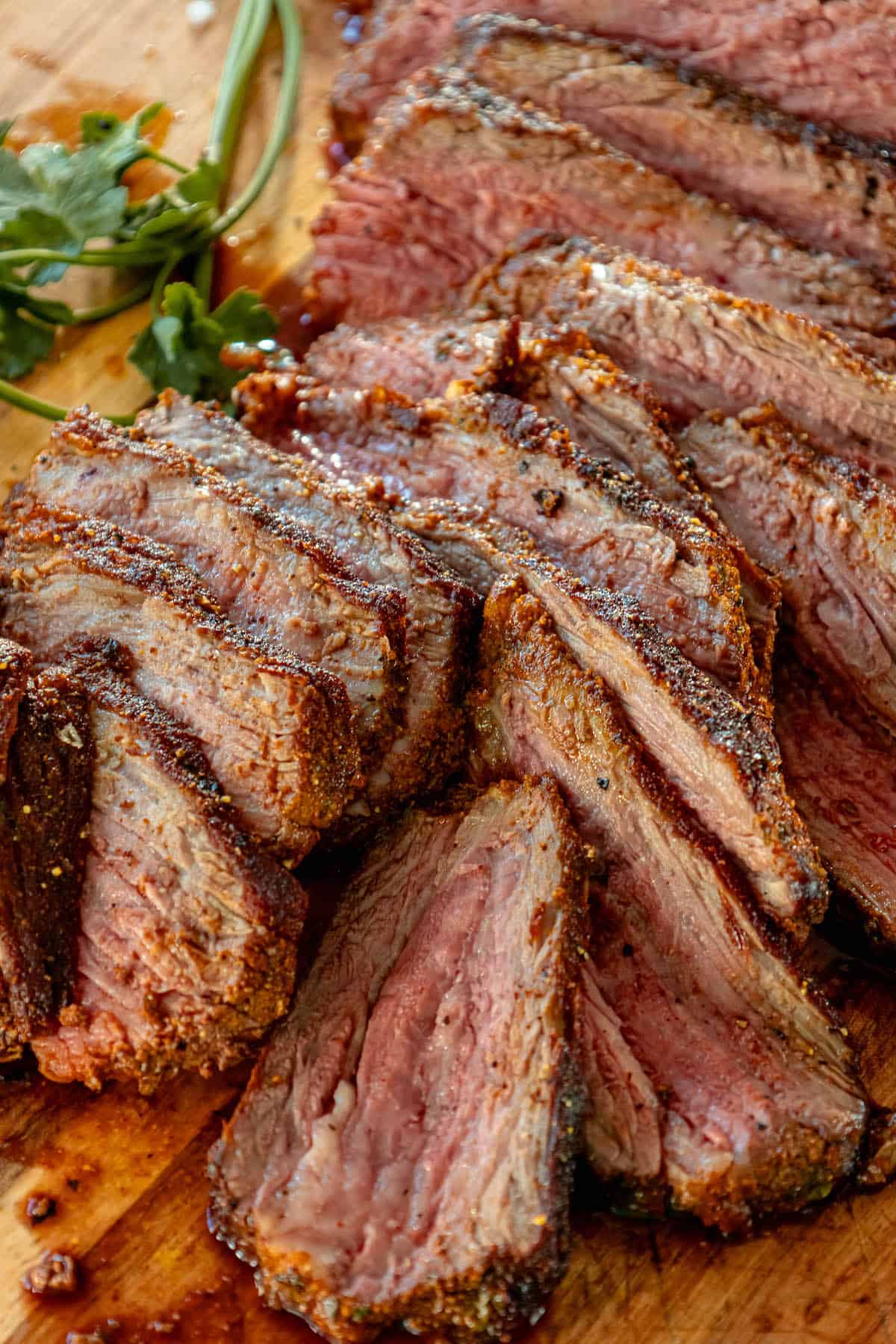
FAQs
Reverse searing is a cooking method where you slow-cook the meat at a lower temperature (usually in an oven or on a grill) before finishing it with a high-heat sear. This method ensures even cooking and a perfect sear on the outside.
Tri-tip is a triangular-shaped cut of beef from the bottom sirloin. It’s known for its rich flavor and tenderness. It’s a popular cut for grilling and roasting.
Reverse searing tri-tip allows for precise control over the internal temperature, resulting in a perfectly cooked and juicy steak. It ensures that the meat is evenly cooked from edge to center.
The recommended internal temperature for tri-tip is typically around 130-135°F (54-57°C) for medium-rare. You can adjust this to your preferred level of doneness.
Tri-tip can be seasoned with a simple mix of salt, pepper, and any other desired seasonings. Some people like to use a dry rub or marinade for added flavor.
Yes, you can reverse sear tri-tip on a grill or gas grill. Just set one side of the grill to low heat for indirect cooking, and the other side to high heat for searing. Place the tri-tip on the low-heat side first, then sear it on the high-heat side.
The cooking time can vary depending on the size of the tri-tip and the cooking temperature. It can take anywhere from 45 minutes to 1.5 hours or more. It’s essential to use a meat thermometer to monitor the internal temperature.
Yes, it’s recommended to let the tri-tip rest for about 10-15 minutes after cooking. This allows the juices to redistribute, resulting in a juicier steak when sliced.
Yes, you can use a smoker for reverse sear tri-tip. Start by smoking the tri-tip at a low temperature until it’s close to your desired internal temperature. Then, finish it with a high-heat sear.
Sides that complement tri-tip include roasted or grilled vegetables, mashed or roasted potatoes, green salad, coleslaw, and bread or rolls.
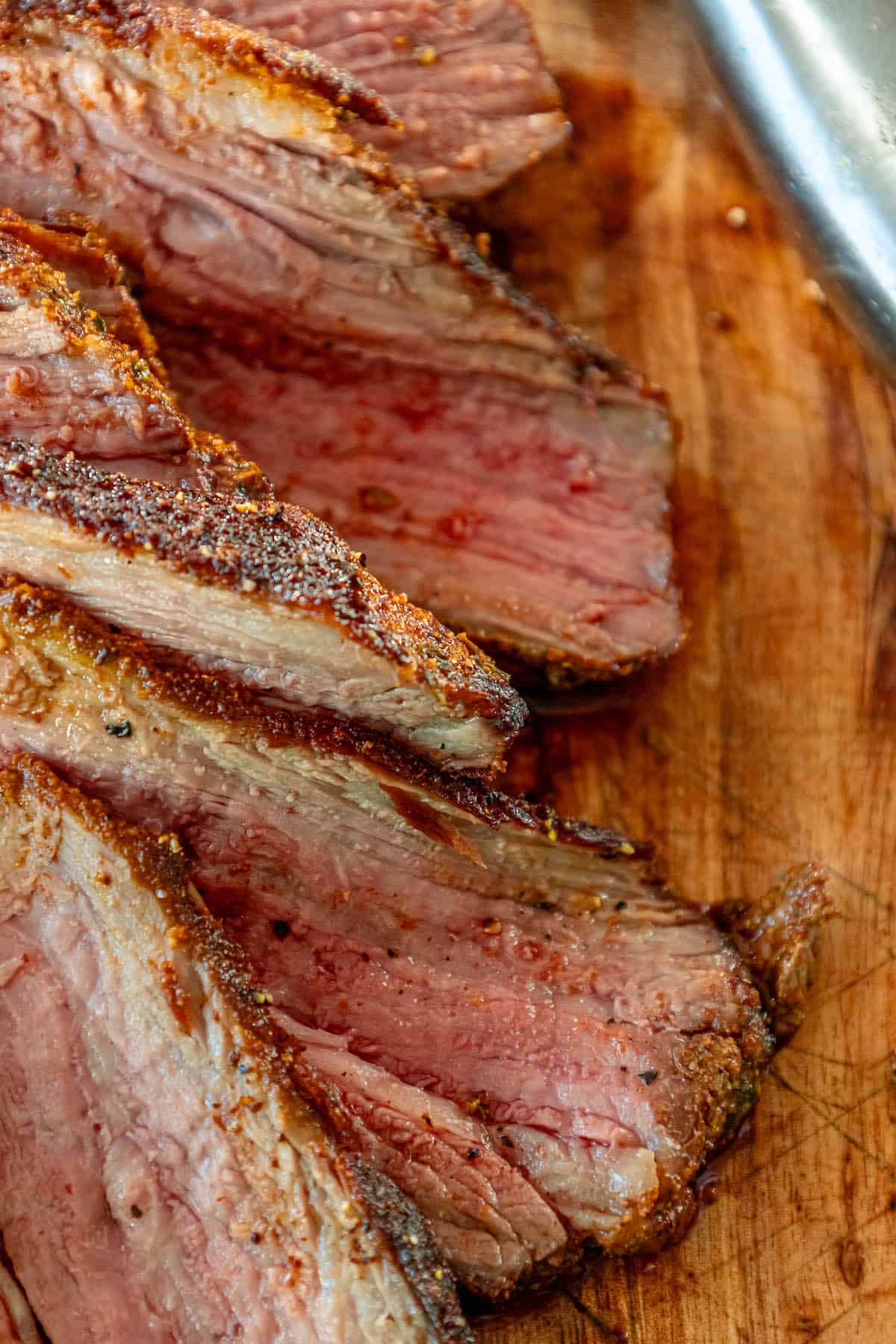
What to serve with Reverse Sear Tri Tip
Grilled Vegetables: Grilled or roasted vegetables like asparagus, bell peppers, zucchini, or broccoli make great companions to tri-tip. Drizzle them with olive oil, season with salt, pepper, and your favorite herbs, and grill or roast until tender.
Garlic Mashed Potatoes: Creamy garlic mashed potatoes are a classic side dish that complements the richness of tri-tip. The creamy texture and the flavor of garlic pair wonderfully with the steak.
Crispy Roasted Potatoes: Roasted potatoes with crispy edges and tender centers are a great choice. Season them with herbs, garlic, and a bit of Parmesan cheese for extra flavor.
Green Salad: A fresh green salad with mixed greens, cherry tomatoes, cucumbers, and a tangy vinaigrette dressing adds a refreshing contrast to the richness of the meat.
Grilled Corn on the Cob: Grilled corn on the cob with a brushing of butter and a sprinkle of your favorite seasonings is a delightful side dish for a summer barbecue.
Creamed Spinach: Creamed spinach is a classic steakhouse side dish. The creamy, cheesy spinach pairs well with the savory tri-tip.
Bread or Rolls: Serve some crusty bread or rolls on the side. You can use them to make mini steak sandwiches if you prefer.
Chimichurri Sauce: A zesty chimichurri sauce made with fresh herbs, garlic, vinegar, and olive oil is a fantastic condiment to drizzle over your tri-tip for an extra burst of flavor. Try our Zhoug (Skhug) Sauce for a different but similar take!
Roasted Brussel Sprouts: Roasted Brussels sprouts with a balsamic glaze or bacon bits add a touch of sweetness and crunch to your meal.
Fruit Salsa: Consider a refreshing fruit salsa with diced mango, pineapple, red onion, cilantro, and lime juice for a tropical twist.
Coleslaw: A creamy or vinegar-based coleslaw adds a nice contrast in texture and flavor.
Gravy or Au Jus: If you prefer a saucy element, a simple beef gravy or au jus can be served on the side for dipping.
Try these delicious sides:
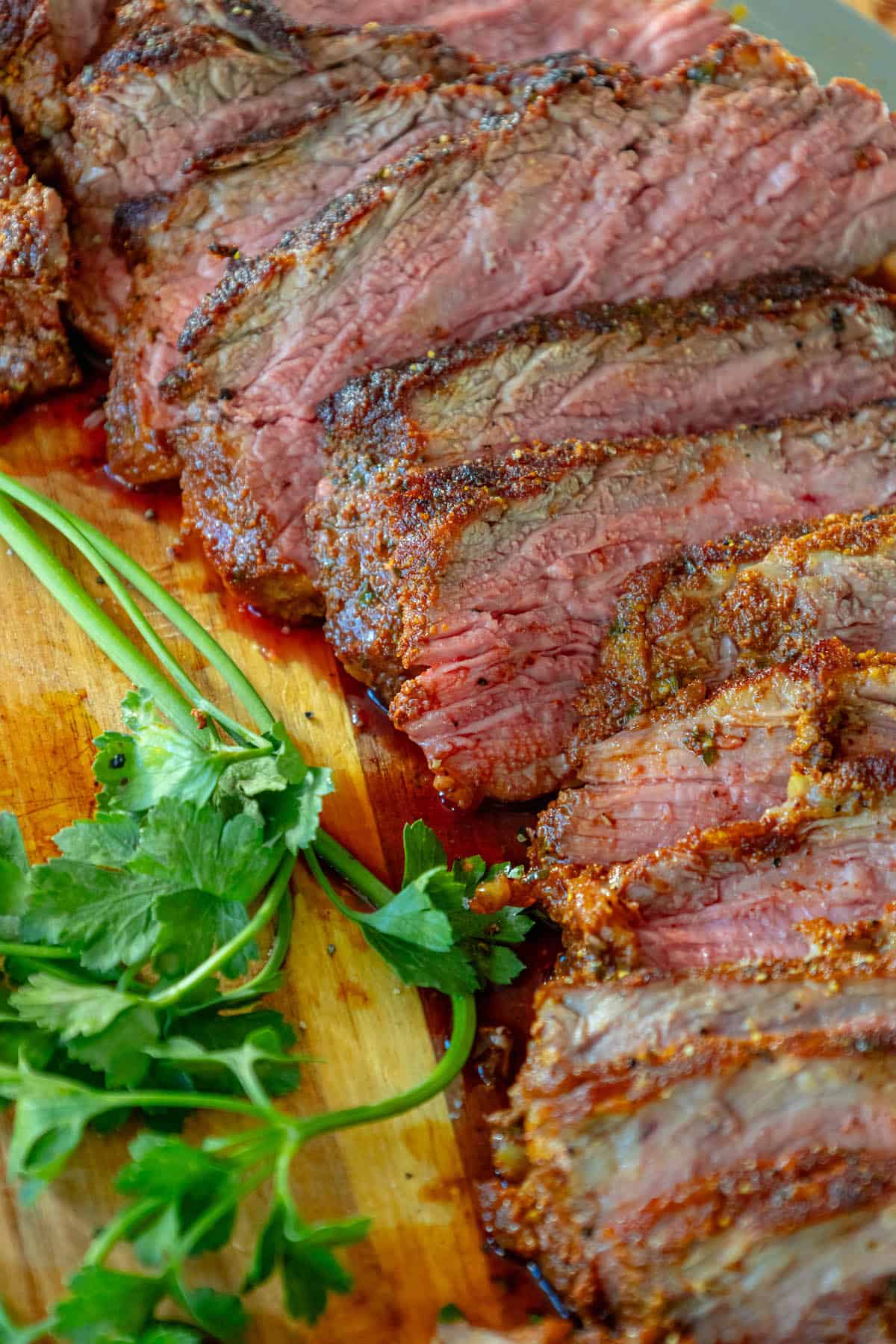
Reverse Sear Tri tip recipe
If you love this easy recipe please click the stars below to give it a five star rating and leave a comment! Pease also help me share on Instagram, Facebook, and Pinterest!
Follow on Instagram
Click here to view the web story for this recipe!
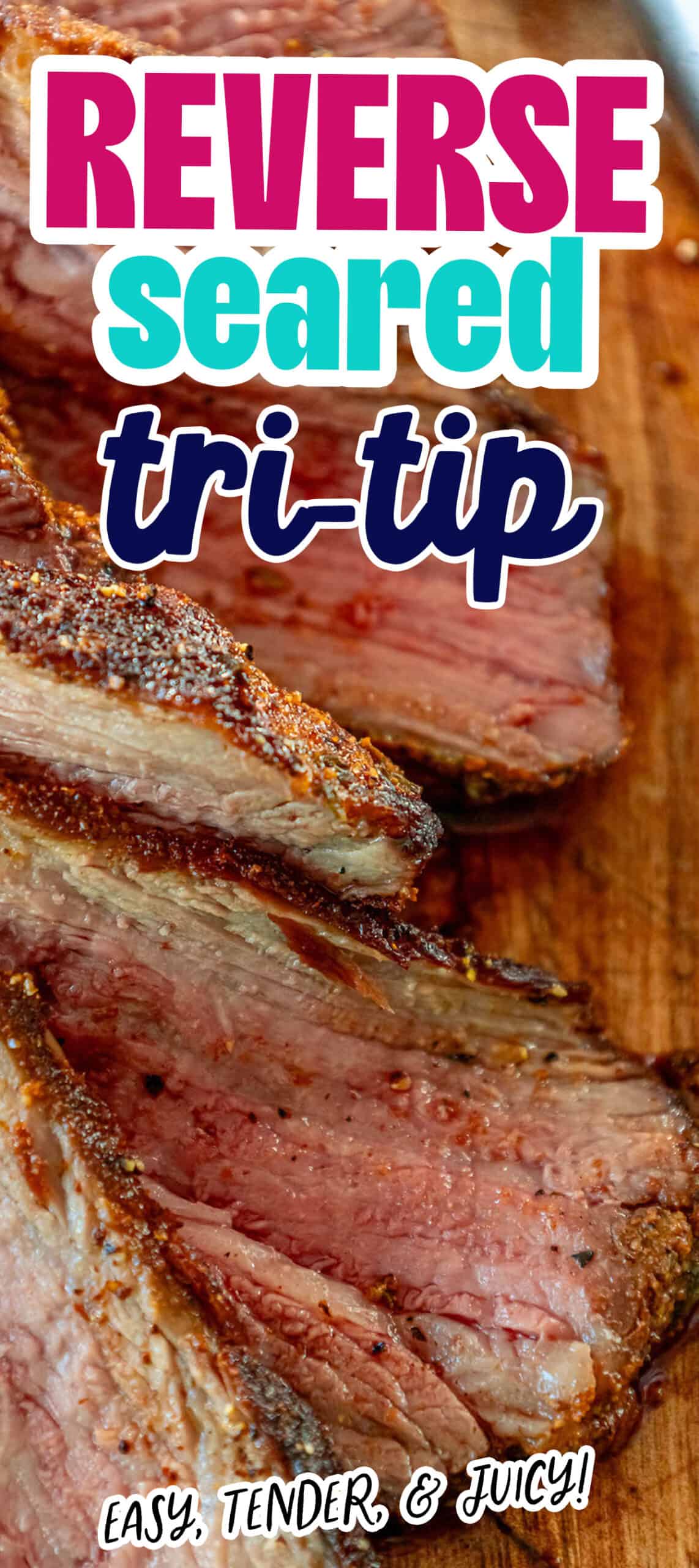
CONNECT WITH SWEET C’S!
Be sure to follow me on social media and get in on all the fun!
Only have 30 minutes to get dinner on the table? Sign up for my 30 minute dinner plans direct to your inbox!
Find and shop my favorite products in my Amazon storefront here!
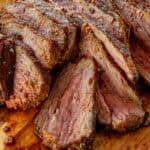
Reverse Seared Tri Tip
Equipment
Ingredients
- 1 tri-tip steak about 2-3 pounds
- 2-3 tbsp of your favorite steak rub or a mix of salt, pepper, garlic powder, and paprika
- 2-4 tbsp unsalted butter
- Optional: Fresh herbs like rosemary or thyme
Instructions
- Take the tri-tip out of the refrigerator about 30-60 minutes before cooking to bring it to room temperature. Pat it dry and generously apply the steak rub.
- Preheat your oven to a low temperature, around 275°F (135°C).
- Place the seasoned tri-tip on a rack over a baking sheet. Insert a meat thermometer into the thickest part of the steak. Cook in the oven until the internal temperature is about 10°F lower than your desired doneness (115-120°F for medium-rare).
- In the last few minutes of oven cooking, heat a cast iron skillet on high on the stove. Add the butter and, if using, some fresh herbs.
- Once the steak reaches the target temperature in the oven, transfer it to the hot skillet. Sear each side for about 1-2 minutes until it develops a nice crust. Don’t forget to sear the edges!
- Once seared, remove the tri-tip from the skillet and let it rest on a cutting board, tented with aluminum foil, for about 10 minutes.
- Cut the tri-tip in thin slices against the grain for the best texture.
- Serve immediately after slicing. You can drizzle some of the buttery juices from the skillet over the top for added richness.
